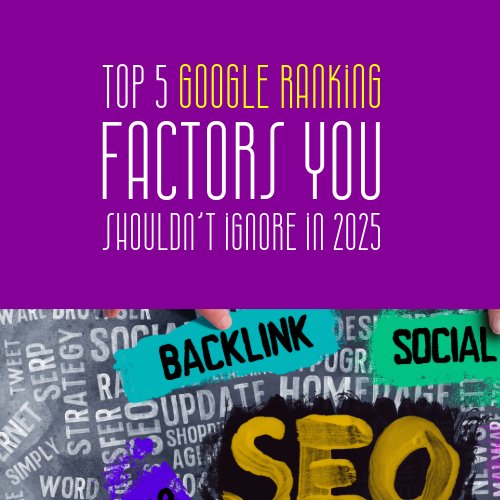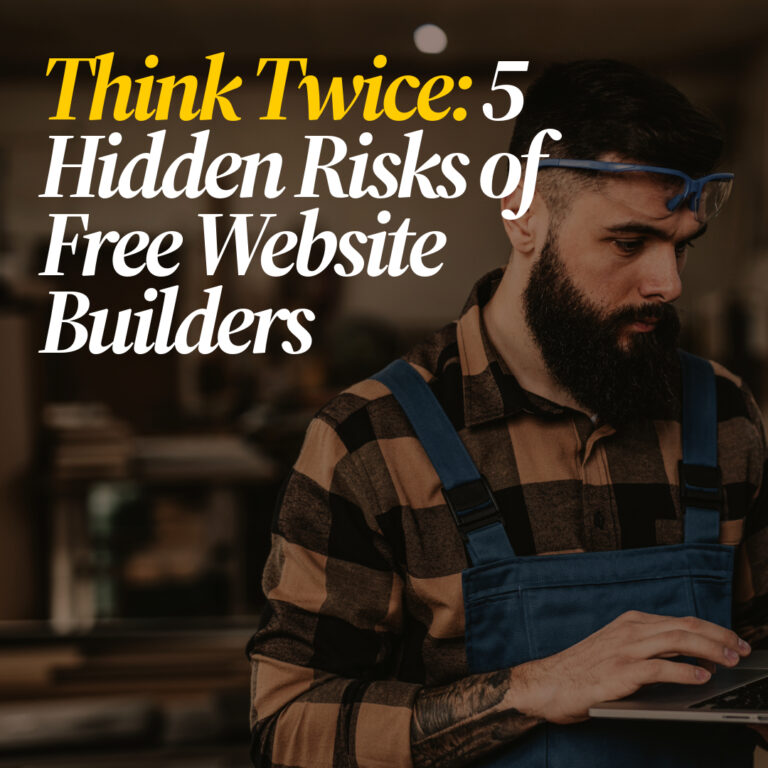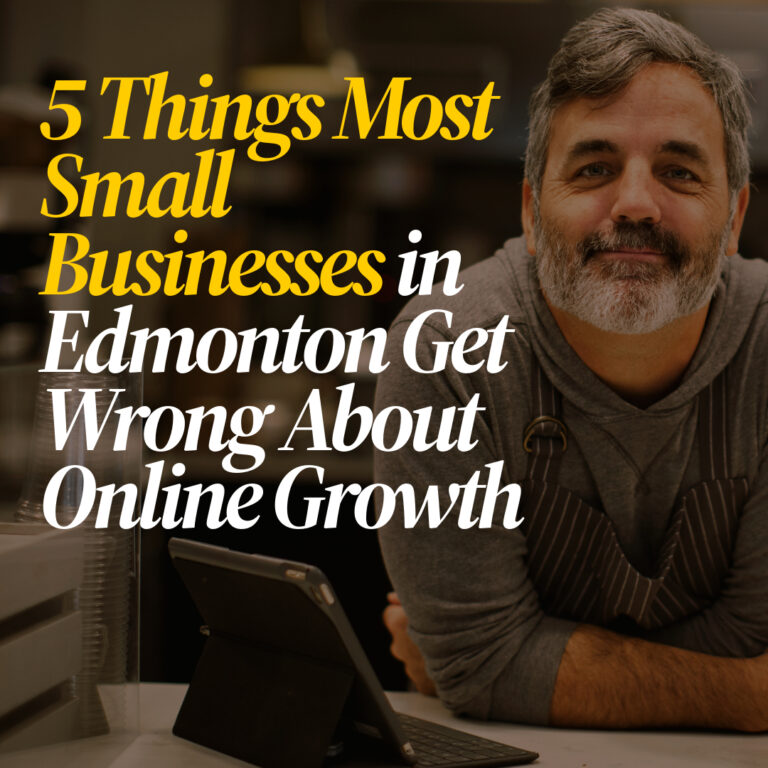Top 5 Google Ranking Factors In SEO You Shouldn’t Ignore in 2025

Top 5 Google Ranking Factors In SEO You Shouldn’t Ignore in 2025
Google’s search engine has never stood still—and neither should your digital strategy.
By 2025, SEO and paid ads (PPC) are not competing opposites but two sides of the same coin. Businesses that treat them as isolated tactics often fall short. Why? Because Google’s evolving ecosystem is laser-focused on one thing: user experience.
Whether you’re investing in organic traffic through SEO or bidding for Google advertising real estate, understanding the actual ranking signals that matter can make or break your visibility.
Below, we break down the five most critical Google ranking factors in 2025, backed by real-world challenges, Google’s own documentation, and proven solutions.
1. Helpful, Experience-Based Content (E-E-A-T 2.0)
What It Means
Google has expanded its E-E-A-T guidelines (Experience, Expertise, Authoritativeness, Trustworthiness) to go beyond “author bio fluff.” In 2025, it’s no longer enough to write informative content. You need to demonstrate first-hand experience solving the problem you’re addressing.
In other words: If your blog post talks about fixing a plumbing issue, Google wants to know you’ve actually fixed one—not just read about it.
Real-World Challenge
Many businesses outsource SEO blogs that “sound good” but lack substance. Google now downgrades that type of content.
What to Do
- Include case studies, original photos, or real usage data.
- Highlight the author’s credentials or relevant experience.
- Add FAQs sourced from actual customer inquiries.
- Use schema markup to indicate the content type and credibility.
Supporting Source
“Our systems aim to prioritize content that is created for people, not to attract clicks.”
— Google Search Central Blog, 2024
2. Core Web Vitals & UX Signals
What It Means
Core Web Vitals—like page loading speed, interactivity, and visual stability—are still heavily weighted in 2025. But now, Google is layering UX signals like scroll depth, dwell time, and click satisfaction to determine whether users truly find your content helpful.
Real-World Challenge
DIY website builders often load slowly and bloat pages with unnecessary scripts. These setups hurt both your organic and paid rankings.
What to Do
- Compress images and load them responsively.
- Avoid third-party themes with heavy JavaScript.
- Run your site through PageSpeed Insights regularly.
- Implement mobile-first design.
Pro Tip: For Google Ads, landing page experience is a quality score factor. A slow page = higher CPC.
3. Intent-Matching: Beyond Keywords
What It Means
In 2025, Google understands user intent more deeply through machine learning. Keywords alone won’t cut it—you need to match the search purpose. Someone searching “how to paint a basement” doesn’t want a services page—they want a tutorial first.
Google’s Search Generative Experience (SGE) uses AI snapshots that reward intent-match, not just keywords.
Real-World Challenge
Business owners often write keyword-stuffed pages hoping to rank—without solving the actual user problem.
What to Do
- Align content with search intent type: Informational, Navigational, Transactional.
- Answer questions immediately above the fold.
- For PPC, test intent-aligned ad copy vs broad sales pitches.
Supporting Source
“We’re evolving Search to help people go from questions to answers faster and more naturally.”
— Sundar Pichai, Google I/O 2024
4. Entity-Based SEO & Brand Presence
What It Means
Google now builds entity graphs—meaning it sees your business as a digital identity, not just a keyword blob. This affects rankings and ad credibility alike.
Your brand presence across platforms (Google Business Profile, YouTube, LinkedIn, etc.) forms your trust profile.
Real-World Challenge
Small businesses with unclaimed profiles or inconsistent branding get outranked—even when their content is better.
What to Do
- Claim and optimize your Google Business Profile.
- Use consistent NAP (Name, Address, Phone) across listings.
- Link between your website, social profiles, and content hubs.
- Leverage schema to define your entity (Organization, Person, LocalBusiness).
Tip for Paid Ads: Google Ads uses your entity score to determine Ad extensions and visibility in local packs.
5. Interaction Data (Clicks, Scrolls, Shares)
What It Means
Google watches what users do after clicking your site:
- Do they bounce immediately?
- Do they scroll, engage, or share?
- Do they convert?
This behavioral data is increasingly weighted in 2025 for both organic and paid rankings.
Real-World Challenge
Sites that get clicks from SEO or PPC but don’t engage users send bad signals—reducing rankings or raising ad costs.
What to Do
- Optimize above-the-fold content to answer “Why should I stay?”
- Add interactive elements: quizzes, tools, videos.
- Reduce intrusive popups that trigger bounces.
- A/B test headlines and CTAs using tools like Google Optimize or Hotjar.
Supporting Source
“Engagement metrics like pogo-sticking and dwell time provide strong relevance signals.”
— Moz + Google UX Research Roundtable, 2024
Comparison Table: SEO vs Paid Ads in 2025
| Feature | SEO (Organic Traffic) | Paid Ads (PPC, Google Advertising) |
|---|---|---|
| Cost Structure | Time & content investment | Pay-per-click or impression |
| Time to Results | 3–6 months minimum | Instant (within 24 hrs) |
| Sustainability | Long-term compounding returns | Ends when budget stops |
| Control Over Appearance | Medium (title/meta/schema) | High (ad copy, sitelinks, callouts) |
| Credibility Factor | Higher (users trust organic results) | Lower (clearly marked as ads) |
| Intent Matching | Content-driven | Keyword-driven + bid-based |
| Algorithm Sensitivity | Very high (E-E-A-T, Core Web Vitals) | Moderate (but increasing in Quality Score) |
How to Decide: SEO, Paid Ads, or Both?
SEO Might Be Right If You…
- Want long-term organic growth
- Have time to build authority
- Sell services that need nurturing or education
- Want to reduce ad spend over time
Paid Ads Might Be Right If You…
- Need leads fast (e.g., seasonal offers, launches)
- Want to test landing pages or new markets
- Have a competitive niche where ranking organically is tough
- Need traffic while SEO ramps up
Best of Both Worlds: Integrated Strategy
Start with PPC to drive early traffic and test message-market fit, then invest in SEO for lasting, compound visibility. Use retargeting ads based on organic blog visitors and build your brand as a trusted entity.
Don’t Chase Algorithms—Understand Them
Google in 2025 isn’t just a search engine—it’s an intent engine. It rewards businesses that:
- Create helpful, experience-based content
- Offer seamless mobile-first performance
- Align with what real users are searching for
- Build consistent, credible online presence
- Keep visitors engaged from click to conversion


